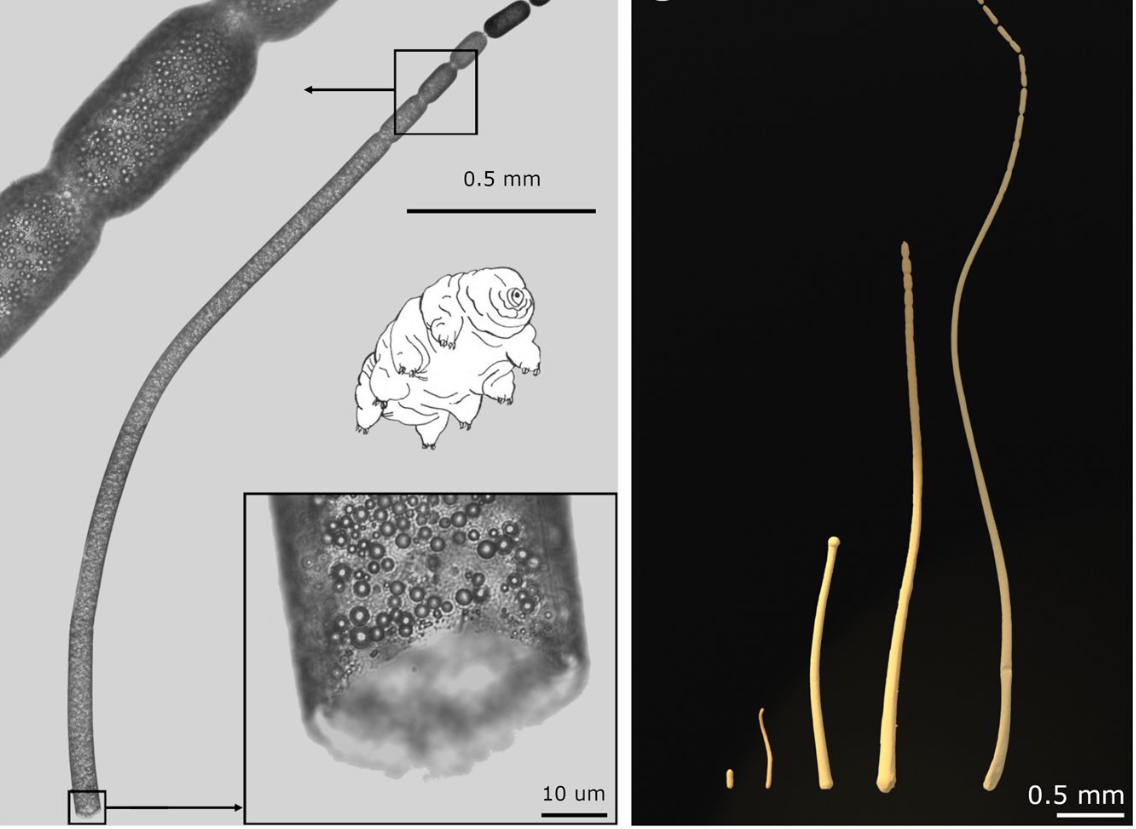Scientists Identify World Largest, Centimeter-Long Bacteria
Scientists discovered the world’s largest bacteria to date, they are filament-formed organisms around the size of human eyelashes and measuring almost 1 cm long. Designated Thiomargarita magnifica, it was first discovered in the mangroves of Guadeloupe, research by marine biologist Jean-Marie Volland then confirmed that it was a single-cell organism.
Results of the study were published in Science, presenting the first insight into this unusual bacterium. The team found that these can cells grow orders of magnitude over theoretical limits through special, complex biology. T. magnifica has unprecedented polyploidy of more than half a million copies of a very large genome and boosts a dimorphic life cycle with asymmetric segregation of chromosomes in its daughter cells. “To put it into context, it would be like a human encountering another human as tall as Mount Everest,” said co-author Jean-Marie Volland, a scientist at the Lawrence Berkeley National Laboratory.
“Along with compartmentalization of genomic material and protein synthesis in membrane-bound organelles, indicate gain of complexity in the Thiomargarita lineage, and challenge traditional concepts of bacterial cells,” the researchers said.
Related article: Massive Human CRISPR-Based Genotype-Phenotype Map Is Now Complete

Unique Bacterial Biology to Overcome Growth Limitations
In other bacteria, genetic material moves freely inside the cell, usually in the form of a circular chromosome. But in T. magnifica, the team saw that the genetic information was stored in hundreds of thousands of membrane-bound structures called pepins. Each pepin contains DNA and ribosomes, molecular machines that translate instructions from DNA to make proteins. The pepins collectively host up to 700,000 copies of the organism’s genome, the large numbers of genome copies scattered throughout the cell support the local demand for molecular machineries and cellular growth.
Many questions remain unanswered, such as how many copies of the genome each pepin stores, and how the gigantic genome functions as a whole. The researchers hypothesize that the genome could be dominated by genes encoding secondary metabolism that are indicative of antibiotic or bioactive compound production.
“The discovery of T. magnifica suggests that large and more complex bacteria may be hiding in plain sight. Investigating their rare biology, energy metabolism and the precise role and nature of pepins, will take us a step closer in understanding the evolution of biological complexity.”
©www.geneonline.com All rights reserved. Collaborate with us: service@geneonlineasia.com








